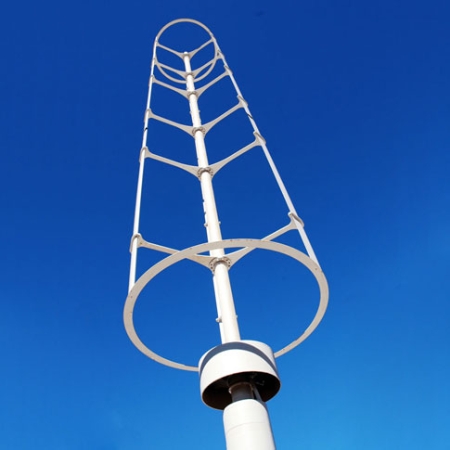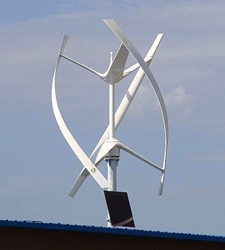New Hampshire -- Vertical-axis wind turbines have been around for thousands of years, yet we still haven't seen modern turbine producers make a dent in the wind market. Why is that so?


With today's renewed interest in renewables, consumers have forgotten about many of the past problems and are again fascinated by such machines. Just go to youtube and type in “vertical axis wind turbine” to see the dozens – if not hundreds – of technologies that folks are touting as the revolution in wind.
“There's nothing new here,” says Small-Wind Expert Ian Woofenden. “We see people coming up with the same old ideas” for harvesting wind on rooftops and within neighborhoods.
Woofenden is one of a number of wind experts who loath vertical axis technologies for both residential and utility applications. He sees them as a threat to consumer and investor confidence in wind.
However, along with what small-wind veteran Mike Bergey calls the “Bozos and Scheisters,” there are also a handful of companies in the space that are being a bit more cautious and transparent in their approach.
For example, Nevada-based Windspire Energy recently opened itself up to testing by the National Renewable Energy Laboratory. Another company, New York-based Urban Green Energy, had its power curve third party verified by China's largest wind certification body. (The company manufactures products in China). Historically, VAWT companies commonly presented theoretical power curves as “proof” of how great their technology is.
The American Wind Energy Association also set up a small wind certification council this year that will help consumers make better choices. Many of the leading VAWT companies support the move, saying that it will help filter out much of the noise in the market.
“We believe in testing. As time goes, certification will be more prevalent and we'll be right there with everyone else,” says WindSpire CEO Walt Borland.
With that said, many of the “leading” VAWT companies are tiny compared to other small wind companies. The performance of these products will determine whether or not companies move beyond experimentation and curiosity. Even the most anti-VAWT folks agree: A more rigorous testing and certification process will be good for everyone involved.
Well, good for everyone except the Bozos and Scheisters.
To hear from Ian Woofenden, WindSpire and Urban Green Energy, check out this week's podcast, linked above
 To subscribe or visit go to:
http://www.renewableenergyaccess.com
To subscribe or visit go to:
http://www.renewableenergyaccess.com